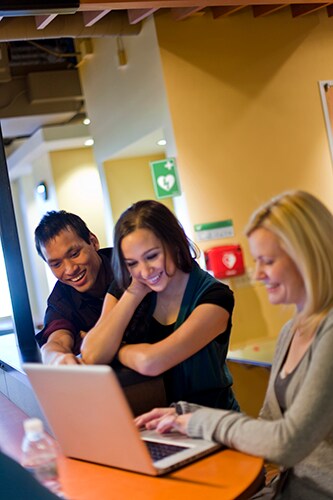The International School of Stavanger (ISS) is located in Southwest Norway, and, at But, that’s where the similarities end. For over 16 years, ISS has led the charge – and is the first school in Norway – to educate both its staff and students in advanced lifesaving techniques. Besides being the hometown of ISS, Stavanger, Norway is also where the Resusci© Anne CPR manikin is made. This has provided the people of Stavanger with a unique, local understanding of how important fast action is in the event of an emergency, like a sudden cardiac arrest (SCA). Taking notice of the staggering stats It is estimated there are as many as 6.8 million to 8.5 million sudden cardiac deaths worldwide every year.1 When SCA strikes, bystanders only have minutes to help. For every minute that defibrillation is delayed, survival decreases by 7 to 10 percent.2 But, if a defibrillating shock is administered within the first minute of collapse, the victim’s chances for survival are close to 90 percent.3 Knowing these stats, when Automated External Defibrillation (AED) technology became available for non-hospital use, it was a no-brainer for ISS to use these devices as teaching tools. The Stavanger school simply believes that CPR/AED training is a natural tie Start early and keep on training In 2002, ISS began teaching their staff and all students in sixth through ninth grades how to use AED and perform CPR. Using 10 Philips HeartStart training AEDs and six clinical defibrillators, along with 10 mini CPR manikins, students – as well This training has already been applied to real-life situations. In 2006, a Dutch NATO officer was dropping off his first grader when he went into cardiac arrest in the lobby of the school. With a defibrillator just 10 meters away, ISS staff was able to provide a shock and resuscitate him. Doing good by spreading the word To date, an estimated 6,400 ISS students and 1,000 staff members have learned CPR/AED fundamentals. Because of the positive In 2007, when the school was celebrating its 40th anniversary year, ISS gave two gifts to the community. They gifted one AED to the local City Hall and a second AED to the airport terminal. Neither facility had an AED in place previously. Carrying on their ‘missionary’ work as educators, in 2013, ISS welcomed the ITV production crew from the UK. The crew’s theory – and the topic of the segment they were filming – was that a heart attack victim’s chance of survival is exponentially greater if the emergency happens in Stavanger, Norway, than if it happens in other countries. Being After doing research, looking at stats and talking to experts, the producers concluded that in Norway educators place a huge importance on teaching students first aid in school and then following up with refresher training in the workplace. For example, survival rates from witnessed, shockable cardiac arrest As ISS continues to spread the word about life-saving preparedness, they encourage other schools across the world to start training programs. It’s a simple formula: the more people who know CPR and how to use an AED; the safer everyone is.
References: 1. Rahul. M. Global public health problem of sudden cardiac death. Retrieved April 23, 2. Sudden Cardiac Arrest Association (n.p.) About AEDs. Retrieved May 10, 3. Sudden Cardiac Arrest Association (n.p.) About AEDs. Retrieved May 10, 4. Campbell, D. (2012, November 18). Chances of surviving cardiac arrest in England ‘dire’. The Guardian. Retrieved May 17, 2018, from https://www.theguardian.com/society/2012/nov/19/chances-surviving-cardiac-arrest-dire.

Tips for starting an AED training program at your school
Stavanger school shared these tips as important points to consider when starting an AED training program.



